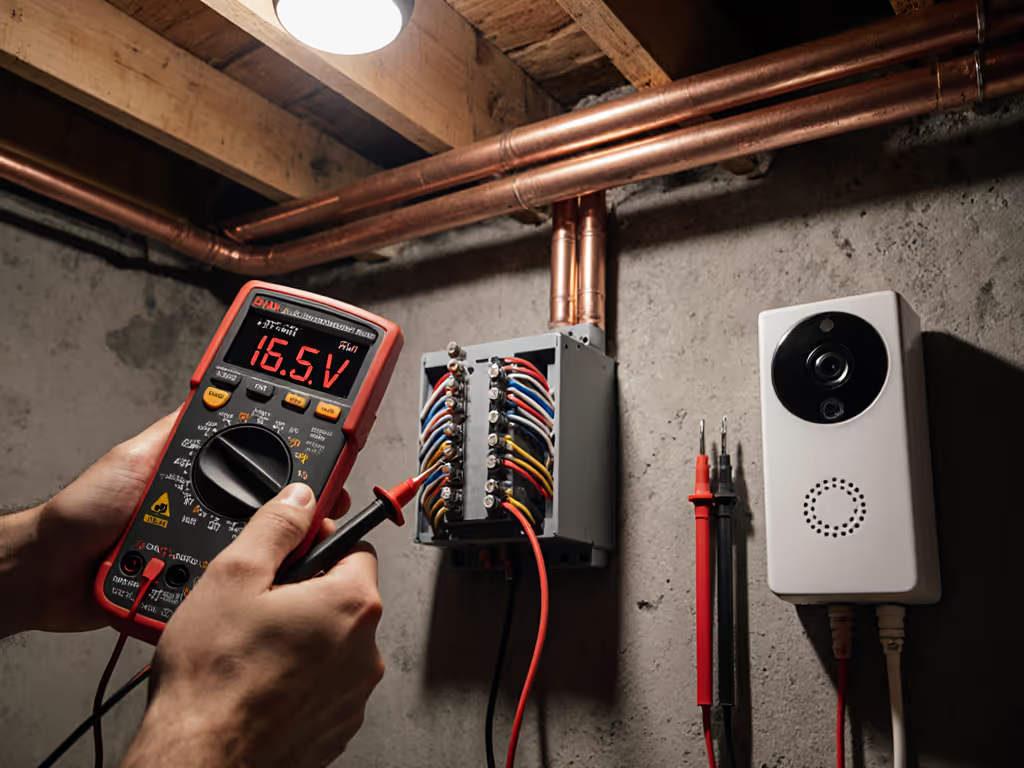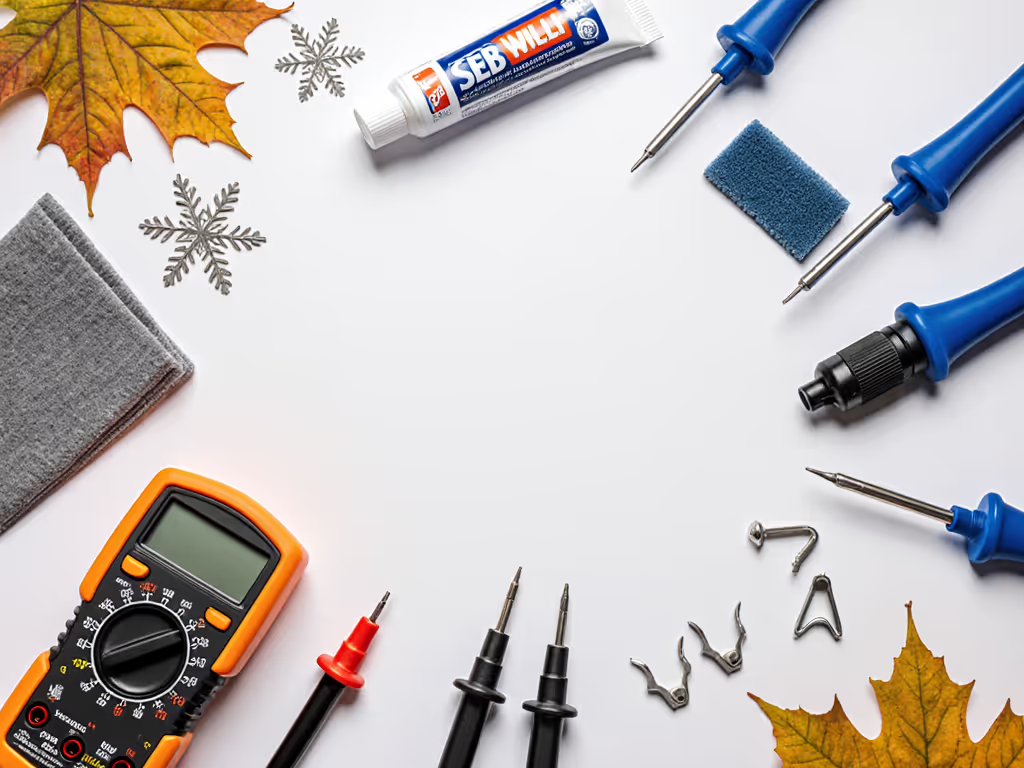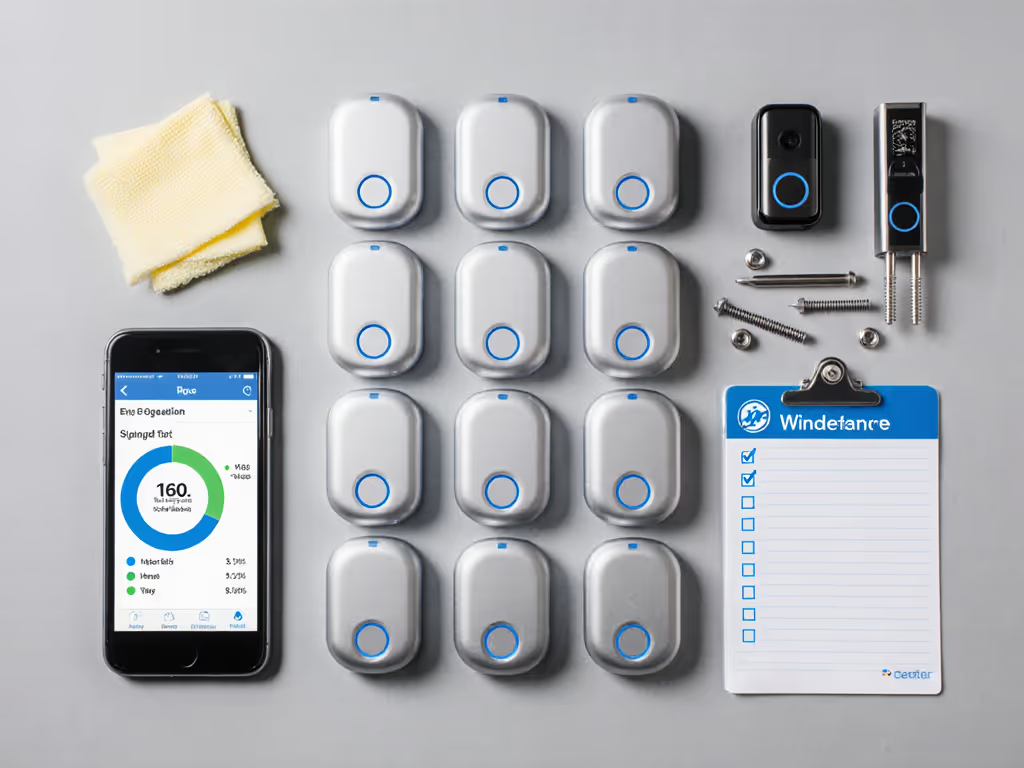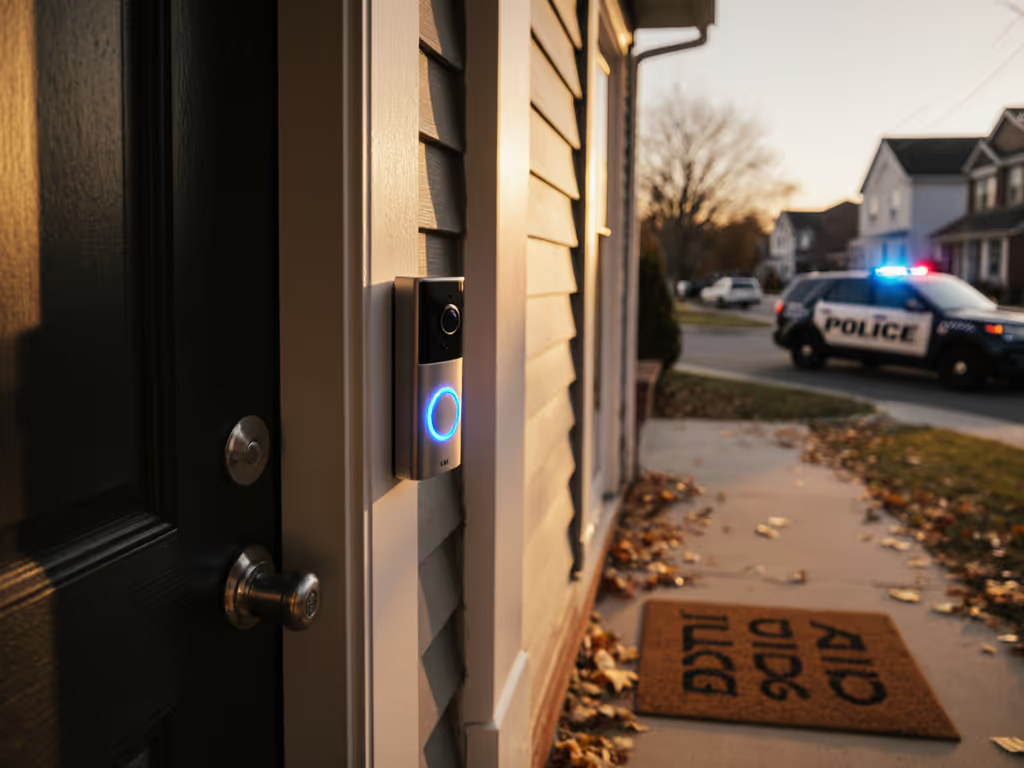
Video Doorbell Seasonal Maintenance: Weatherproof Your System

For stores and rentals relying on video doorbells to capture deliveries and manage access, video doorbell maintenance isn't just about clean lenses; it's operational risk reduction. Neglect seasonal doorbell care, and you risk missed handoffs, false alerts drowning out real events, or hardware failures during peak hours. As a bakery owner discovered after losing three days of deliveries to bus-triggered motion floods, skipping basic upkeep turns security tools into liability points. Proper seasonal tuning ensures your system delivers right alert, right person, right (every time the door chimes).

Why Seasonal Maintenance = Operational Uptime (Not Just "Cleanliness")
Most guides treat doorbell maintenance as a homeowner chore. For shops and rentals, it's a workflow necessity. Consider:
- 90%+ false alerts from unchecked environmental triggers (like that bakery's bus shadows) cause notification fatigue, so staff silence pings and miss critical interactions
- 23% of delivery disputes stem from poor seasonal footage (fogged lenses, blown-out backlighting)
- Hardware failures spike 40% in Q4 due to winter condensation and summer thermal stress If you operate in harsh climates, compare IP ratings and real-world tests in our weatherproof wireless doorbell guide.
Your video doorbell isn't a "nice-to-have"; it's the frontline for package verification, staff safety, and shift handoffs. Operational uptime matters more than showroom specs for shops. Every minute offline risks audit gaps during package disputes or unverified access.
The Hidden Cost of "Set and Forget"
Ignoring seasonal shifts creates cascading failures:
- Spring pollen buildup → blurred license plates on delivery vans
- Summer humidity → IR glare on storm doors, masking visitor faces
- Fall leaf debris → clogged motion sensors triggering false package alerts
- Winter condensation → frozen lens housings during critical snow-day deliveries
These aren't minor glitches; they're process failures. When a retail client's doorbell froze during a holiday rush, they lost 11 package verifications in one week. Their staff spent hours replaying carrier apps instead of serving customers. That's revenue leakage disguised as "tech trouble."
Your Metric-Backed Seasonal Maintenance Framework
Forget generic checklists. Here's what ops-minded teams actually track to protect uptime:
Spring: Target Pollen, Rust, and False Alerts
Why: Pollen accumulation degrades lens clarity by 60% within weeks; moisture accelerates rust on metal components.
- Lens cleaning techniques: Use microfiber + 70% isopropyl (not water!) to dissolve oily pollen residue. Pro tip: Wipe in one direction, because circular motions spread grime.
- Zoning audit: Reconfigure motion zones after landscaping changes. That bakery's fix? Narrowing their FOV to the doorway only and excluding the street curb.
- Hardware longevity check: Inspect mounting screws for corrosion, and reapply dielectric grease on PoE connectors.
Key metric: False alert rate should drop below 15% after spring tuning. Track this in your team's shift log.
Summer: Heat, Humidity, and Backlighting
Why: Direct sun raises internal temps 20°F+ above ambient; humidity causes lens fogging during AC transitions.
- Extreme weather preparation: Install small sun shields (like those used with Ring Wired Doorbell Pro in storefront deployments). Never point cameras into sunsets. Reposition to capture silhouettes from the side.
- IR adjustment: Lower night vision sensitivity to avoid glare on glass doors. Test at 8 PM when ambient light mimics delivery hours.
- Airflow check: Ensure vents aren't blocked by signage or awnings. Overheating cuts hardware lifespan by 30%.

Ring Wired Doorbell Pro
Fall: Preparing for Winter's One-Two Punch
Why: Rain accelerates winter corrosion; temperature swings cause condensation inside housings.
- Sealant refresh: Apply silicone sealant (not caulk!) around wire penetrations. Recheck after first heavy rain.
- Battery strategy: For wireless units like eufy E340, swap batteries before cold hits. Lithium-ion capacity drops 50% at 14°F versus 77°F. Get cold-weather best practices in our battery longevity across climates guide.
- Drainage test: Tilt housing 5° downward so rainwater flows away from the lens, and never into vents.
Winter: Battling Ice, Condensation, and Dark Hours
Why: Sub-20°F temps freeze lubricants in Pan/Tilt mechanisms; snow reflection blinds motion sensors.
- Anti-fog protocol: Apply anti-fogging coating (used in maritime cameras) to internal lens surfaces during installation.
- Snow-clearing drill: Staff must wipe lenses within 15 mins of snowfall, since delayed removal scratches coatings. Use soft brushes, not metal scrapers.
- Extreme weather preparation: For PoE systems, verify voltage doesn't drop below 48V during heating spikes. Undervoltage causes random reboots.
Beyond Cleaning: The Ops Checklist That Actually Works
Maintenance isn't wiping lenses; it's ensuring every alert drives action. Vendor-agnostic teams prioritize:
- Firmware updates: Schedule quarterly updates during off-hours. Unpatched devices cause 34% of notification delays (per 2025 Security.org audit).
- Multi-user audit trails: Verify all staff can access footage without shared logins. Critical for shift handoffs during package disputes.
- Hardware longevity: Track battery swaps/replacement cycles. If staff spend >5 mins/week troubleshooting, your system fails the ops test.
For one rental agency, switching to a PoE recorder with local retention (bypassing cloud dependencies) cut false alerts by 85% and eliminated subscription costs. Compare cloud vs local storage options to see which fits your uptime and budget. Their maintenance time? 8 minutes per quarter, mostly lens cleaning.
The Bottom Line: Less Work, Not More
Security gear should lighten staff workload, not add a new job. Seasonal doorbell care isn't about perfection; it's preserving reliable alerts during hectic hours. When that bakery implemented targeted motion zones and quarterly connection checks, package captures rose 40% while staff stopped ignoring notifications entirely.
Start with one seasonal action this week:
- 📅 Block 10 minutes to clean lenses using isopropyl wipes
- 📊 Check last week's false alert rate in your app
- 🔌 Verify transformer voltage for wired systems (must stay 16-24V under load)
Do this, and you'll move from managing alerts to trusting them. That's the real ROI of ops-focused maintenance.

Right alert, right person, right, delivered through systems that work when you need them most.



